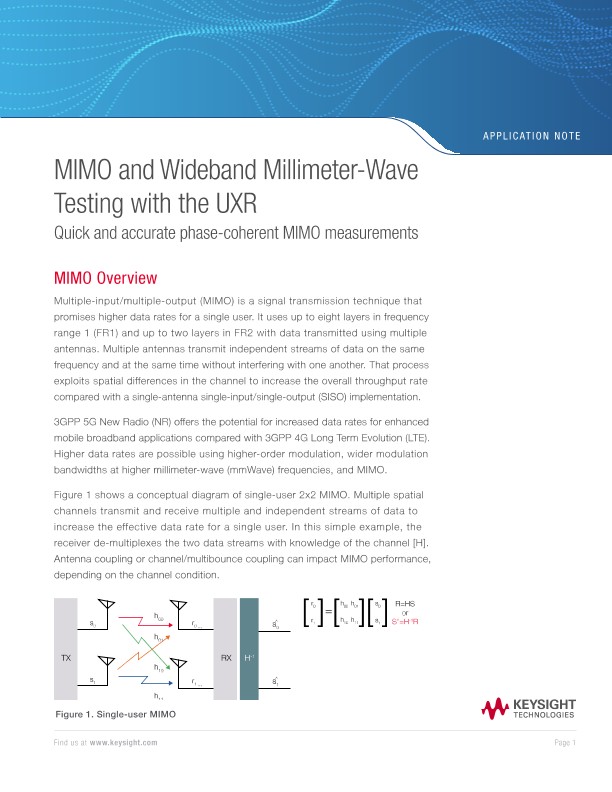
MIMO and Wideband Millimeter-Wave Testing with the UXR
애플리케이션 노트
MIMO Overview
Multiple-input/multiple-output (MIMO) is a signal transmission technique that promises higher data rates for a single user. It uses up to eight layers in frequency range 1 (FR1) and up to two layers in FR2 with data transmitted using multiple antennas. Multiple antennas transmit independent streams of data on the same frequency and at the same time without interfering with one another. That process exploits spatial differences in the channel to increase the overall throughput rate compared with a single-antenna single-input/single-output (SISO) implementation.
3GPP 5G New Radio (NR) offers the potential for increased data rates for enhanced mobile broadband applications compared with 3GPP 4G Long Term Evolution (LTE). Higher data rates are possible using higher-order modulation, wider modulation bandwidths at higher millimeter-wave (mmWave) frequencies, and MIMO.
Figure 1 shows a conceptual diagram of single-user 2x2 MIMO. Multiple spatial channels transmit and receive multiple and independent streams of data to increase the effective data rate for a single user. In this simple example, the receiver de-multiplexes the two data streams with knowledge of the channel [H]. Antenna coupling or channel/multibounce coupling can impact MIMO performance, depending on the channel condition.